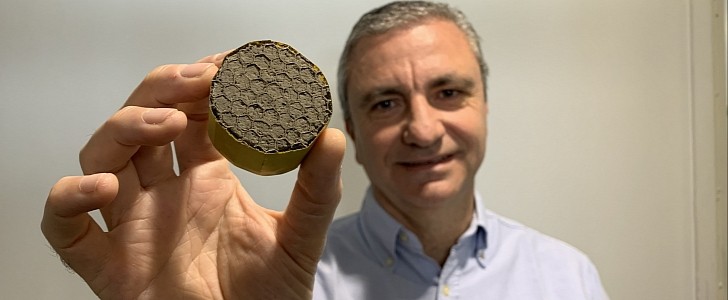This new type of acoustic material could revolutionize the automotive industry and make our vehicles considerably less noisy. It could be used in the automotive, aircraft industry, and more.
We’re talking about the lightest sound insulation material ever to be made so far and we have researchers at the University of Bath in England to thank for. This new type of ultralight acoustic material is a graphene oxide/polyvinyl alcohol aerogel and it weighs only 0.13 lb per cubic foot (2.1 kg per cubic meter).
The new aerogel has the potential to reduce noise by up to 16 decibels, according to researchers. To get a better idea of the difference, imagine that your normal jet airliner has a cabin noise of approximately 105 dB. This new acoustic material could reduce that roar to a 95 dB level, which is something closer to the noise produced by a hairdryer.
The technique used by the researchers to come up with this material could be compared to that of making meringues by whipping egg whites. The acoustic material is solid enough but also contains a lot of air, which makes it low-density and light at the same time.
The fact that this aerogel is so light makes it perfect for aircraft, where every pound matters. It could act as an insulator within aircraft engine nacelles and the overall weight would barely be increased. But reducing the engine noise of airplanes is not the only use this insulator could have. According to Professor Michele Meo, the leader of the research, the new aerogel could have applications in other fields as well, such as automotive, marine transport, and even the field of constructions. It could also be used for making panels in helicopters or car engines.
Researchers are now working on further optimizing the material so that it can improve its heat dissipation. This would be beneficial for both safety reasons and fuel efficiency. If everything goes well, scientists estimate the material could be in use within the next year and a half.
The new aerogel has the potential to reduce noise by up to 16 decibels, according to researchers. To get a better idea of the difference, imagine that your normal jet airliner has a cabin noise of approximately 105 dB. This new acoustic material could reduce that roar to a 95 dB level, which is something closer to the noise produced by a hairdryer.
The technique used by the researchers to come up with this material could be compared to that of making meringues by whipping egg whites. The acoustic material is solid enough but also contains a lot of air, which makes it low-density and light at the same time.
The fact that this aerogel is so light makes it perfect for aircraft, where every pound matters. It could act as an insulator within aircraft engine nacelles and the overall weight would barely be increased. But reducing the engine noise of airplanes is not the only use this insulator could have. According to Professor Michele Meo, the leader of the research, the new aerogel could have applications in other fields as well, such as automotive, marine transport, and even the field of constructions. It could also be used for making panels in helicopters or car engines.
Researchers are now working on further optimizing the material so that it can improve its heat dissipation. This would be beneficial for both safety reasons and fuel efficiency. If everything goes well, scientists estimate the material could be in use within the next year and a half.

